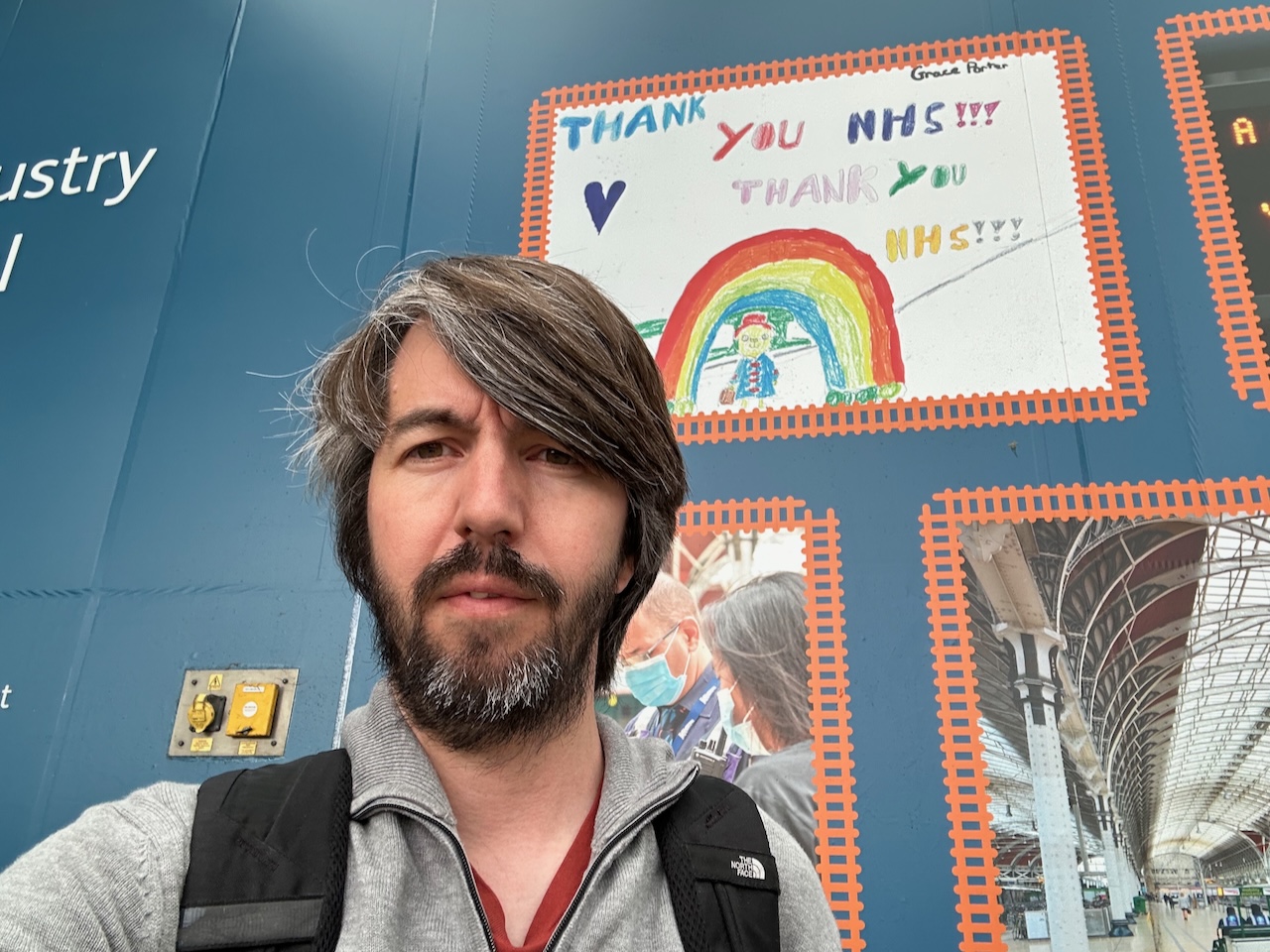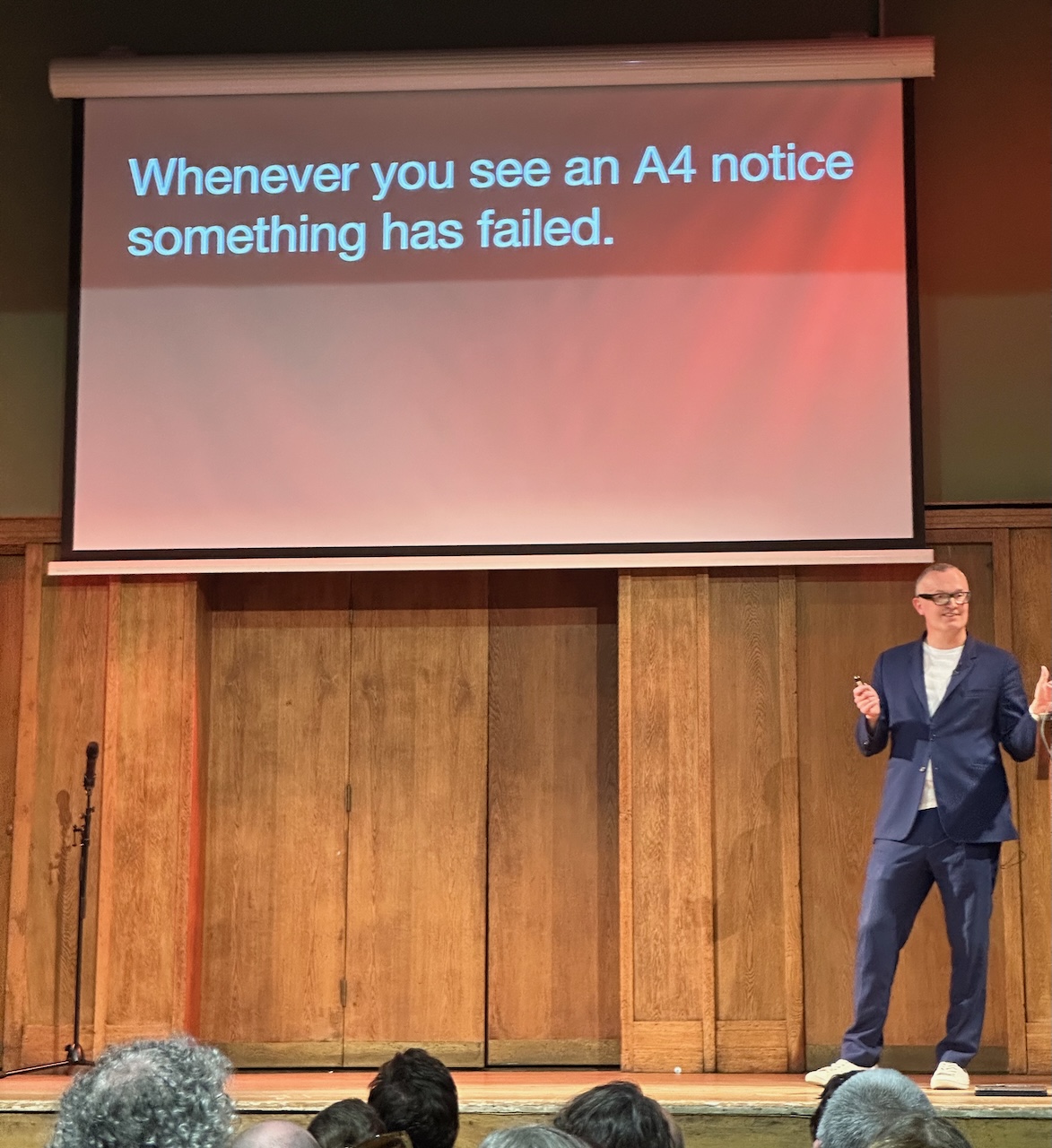Week 5: Interesting

This week continued the theme of going out and meeting our users with an early train on Tuesday to go and meet a vaccination team based near Bristol.
We had slightly underestimated the crowd, and had 20 clinical staff and vaccinators turn up, keen to hear about the new service. So we split the group into two and I stepped up and led a demo to one of the groups.
As before, we got a ton of useful feedback and interesting questions to take back to the team.
We also got a lesson in the importance of field testing, as the low resolution screen I demoed on plus the slow internet connection caused a few issues.
It was really inspiring to talk to the vaccination team. One of them had started as volunteer during the pandemic. They were also passionate about reducing health inequality, and did vaccination sessions with people in deprived areas who struggled to access to GPs and pharmacies, as well as with homeless people.
Wins
I’m slowly gaining access to some essential tools. Some things have taken longer than they should, and at one point I had a ticket open with IT in order to gain access to their system to open tickets. But the IT team are very helpful on the phone, and no doubt have plenty of their own technical migration issues to solve.
I managed add Adobe Analytics to our guidance website, thanks to a helpful internal guide. I’ve not used this before, so I’m interested to see how useful it’ll be (if you’ve got any experience of it, let me know!).
I’ve also been talking to our development team about aligning more closely to the NHS design system layout and header. Being able to put together a quick working demo of this using the NHS prototype kit really helped here.
Org charts vs webs
I’m slowly understanding the organisation structure of directorates, sub-directorates, portfolios and teams.
However I’m also finding it useful to develop more informal internal connections.
This observation from Tim Berners-Lee in his original proposal for the world wide web is as true today as it was back in 1989:
Although they are nominally organised into a hierarchical management structure, this does not constrain the way people will communicate, and share information, equipment and software across groups.
The actual observed working structure of the organisation is a multiply connected “web” whose interconnections evolve with time.
Interesting
Mid week I attended Interesting, an evening of short esoteric talks at the Conway Hall.
There were lots of talks I enjoyed, but one that struck me was the talk by Ben Terrett (ex Newspaper Club founder) about taps.
This was an entertaining rant about the infuriating modern touch-free taps which require instructions for how to use them.
This slide struck a chord with the crowd:

I couldn’t help reflecting that hospitals, GP surgeries and other health settings are full of such signs.
The people producing these A4 notices are often doing a hugely valuable public service to work around the problems, but lack the ability and power to solve the actual problem.
As designers and software engineers though, they’re a signal to us to do better.
NHS acronyms of the week
Some groups mentioned this week:
- CSG (clinical safety group) – reviews clinical safety of digital services and gives go/no-go for launch
- TRG (technical review and governance group) - makes sure services align to technical policies and standards
- OGG (onboarding governance group) – not quite sure of this one
Links
- Choosing a prototyping tool from Jon Roobottom
- A short(ish) history of the NHS design system – a 6 part history from the legendary Dean Vipond (who I really need to catch up with soon)
- A to-do list for the next NHS Director of Transformation – 6 great suggestions from Public Digital